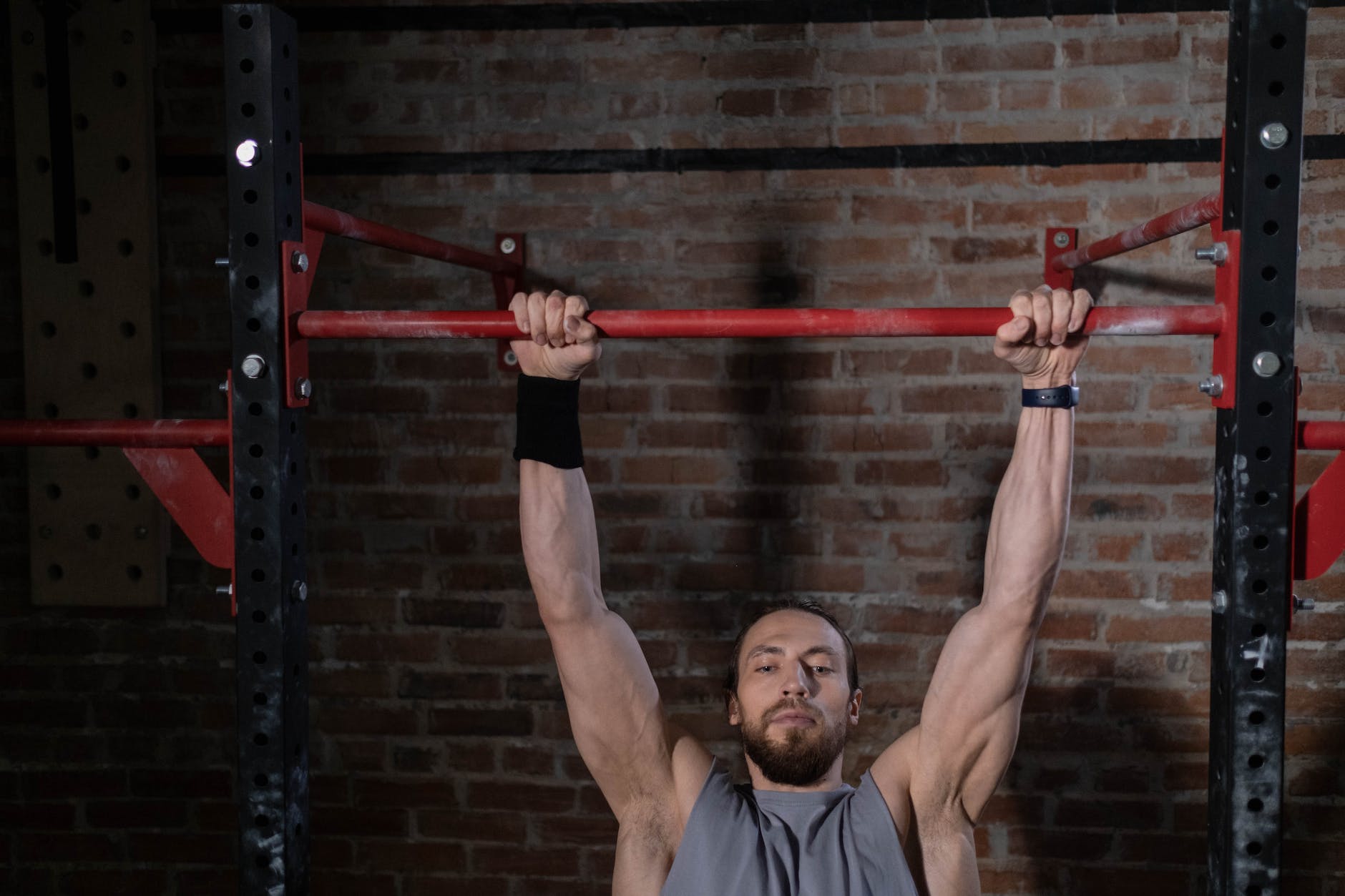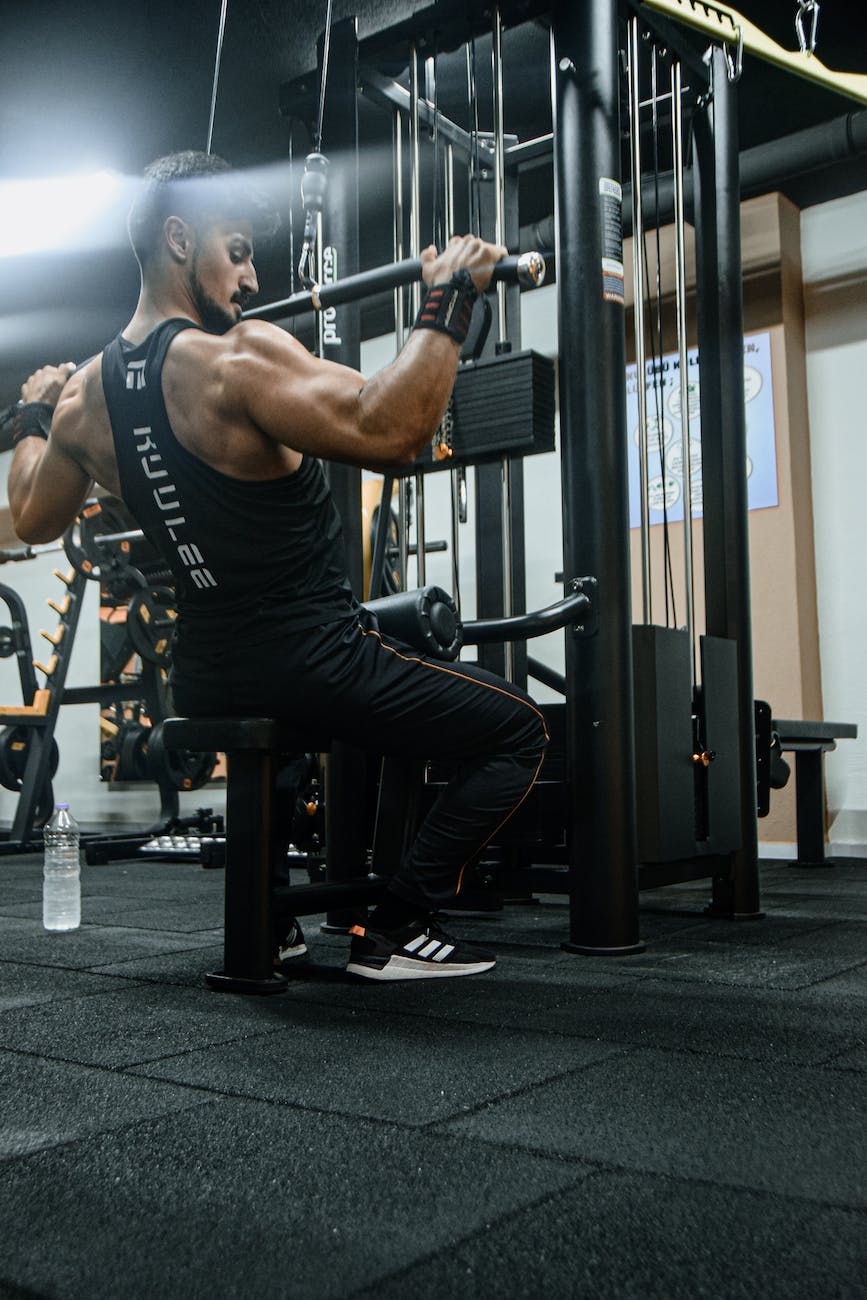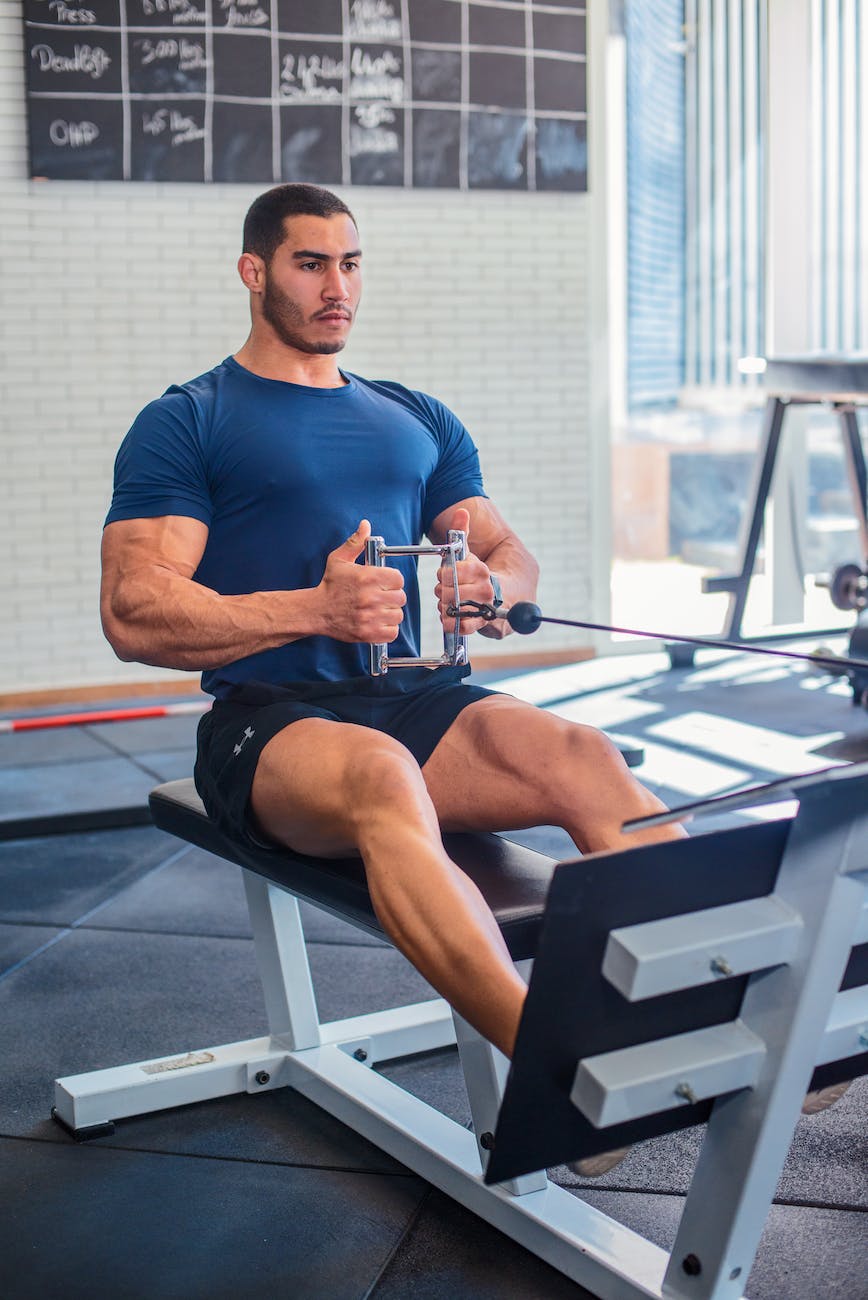Pull-Ups
Hey there, fitness enthusiast! Ever wondered why pull-ups are often hailed as the king for best compound back exercises? It’s not just a fluke or gym folklore; there’s genuine science behind it. When you engage in a pull-up, multiple muscle groups – like the latissimus dorsi (your broadest back muscle), biceps, and even the brachialis – spring into action. The muscle contraction during a pull-up is eccentric (lengthening) followed by concentric (shortening), offering optimal muscle fiber recruitment. So, in layman’s terms? Pull-ups are an all-in-one package for a strong, sculpted back

Engaging More Than Just Your Back: The Compound Magic
Compound exercises are the unsung heroes of the fitness world, and pull-ups fit the bill perfectly. As you pull yourself up, resisting gravity, your muscles undergo isotonic contraction – that’s where muscles change length under tension. What’s the big deal, you ask? Well, this type of contraction provides a balanced workout, engaging not just the back but also the arms, shoulders, and core. So, the next time you’re dangling from that bar, remember you’re giving a whole lot more than just your back a thorough workout!
Mistakes to Avoid for Maximum Muscle Engagement
We’ve all been there – swinging legs, half-hearted pulls, and the all-dreaded ‘chin doesn’t reach the bar’. These common missteps can hamper the effectiveness of your pull-ups. For optimal muscle contraction, focus on a full range of motion. Start by hanging with a complete arm extension and pull until your chin is over the bar. This ensures your muscles, especially the latissimus dorsi, undergo a full contraction cycle, maximizing the benefits.
Pull-ups, with their scientific backing, offer a holistic back workout like no other. Not only do they target multiple muscle groups, but the dynamic muscle contraction involved also ensures you’re getting the most bang for your buck. So, the next time someone asks about the best compound back exercise, you know what to say – Pull-Ups! They’re not just an exercise; they’re a science-backed upper body celebration! For more upper and lower body workouts, check out our page on the best workout for muscle growth!
Deadlift
Hey, fellow gym lovers! Ever watched in awe as someone lifts a barbell stacked with weights off the ground? That’s the deadlift for you – a pure display of raw power. But let’s dive deeper, shall we? When you deadlift, your erector spinae (those muscles running along your spine) work overtime. They undergo isotonic contractions, which means they change length while under tension. This dual action of lengthening and shortening ensures they’re getting stronger with every lift. So, when you’re hoisting that weight, you’re not just showing off; you’re scientifically building a stronger back, which adds it to our best back compound exercises.
The All-Body Workout
You might think deadlifts are all about the back, but surprise! This exercise is a compound movement superstar. While the primary contraction is in your back, a whole ensemble of muscles join the party. Your hamstrings, glutes, forearms, and core muscles all play their part. The integrated muscle activation makes deadlifts a total body workout. Remember, every time you deadlift, you’re saying a big hello to multiple muscle groups, giving them all a taste of that tension and contraction magic. It would be hard to argue that there is another workout that hits more muscle groups at one time than deadlifts. With so many muscle groups being activated, there can be a cost which is improper form.

The Art of Perfecting Your Form
Okay, quick heads-up: deadlifts are amazing, but a wrong move can be counterproductive. Here’s a tip to ensure maximal muscle engagement – maintain a neutral spine. It ensures optimal isotonic contraction in your erector spinae. Avoid rounding your back, as it can cause undue stress and diminish the effectiveness of the muscle contractions. Also, drive through your heels, squeezing those glutes at the top. This ensures you’re targeting the right muscles throughout the movement. After all, when you’re working so hard, every muscle should reap the benefits, right?
If your a visual learner, watch this video for correct form.
Ah, deadlifts! A brilliant blend of science and strength. They’re not just about lifting heavy weights off the ground but about understanding and feeling every muscle contraction. Whether it’s the erector spinae working to protect your spine or the hamstrings and glutes firing up, deadlifts offer a holistic workout like no other. So, the next time you’re at the gym, and someone asks why you’re so focused on your deadlift form, just wink and say, “It’s all in the science!” Happy lifting!
Lat Pulldowns
Have you ever dreamt of flaunting that striking V-shaped torso? The dream of looking like a dorito from the back is very tempting. Well, lat pulldowns might be your ticket. This popular gym equipment targets the latissimus dorsi, lovingly known as the ‘lats.’ Every time you pull that bar down, your lats contract isometrically, meaning they generate force without significantly changing length. This constant tension? Oh, it’s your lats’ way of saying, “We’re growing, buddy!” And who wouldn’t want those wings to spread?
The Synergy of Muscle Groups
Lat pulldowns are not a solo act. While the lats steal the show, several supporting actors play their parts perfectly. Your rhomboids, teres major, biceps and the posterior deltoids all engage during the exercise. As you pull the bar down, these muscles experience concentric contractions – they shorten under tension. And when you release? They undergo eccentric contractions, lengthening gracefully. This harmonious dance between muscles ensures you’re sculpting a powerful, well-defined back. The variety of muscles it hits in the back makes it an esscence for best back compound exercises. It’s teamwork at its finest, folks!
Perfecting Your Pull: It’s All in the Grip!
Here’s a golden nugget for you: the grip can make all the difference. For effective muscle engagement, keep your grip just slightly wider than shoulder-width. This allows for maximum range of motion and optimal contraction of the lats. And remember, squeeze your shoulder blades together as you pull. This tiny move ensures you’re firing up the right muscles, particularly the rhomboids. A little tip? Imagine squeezing a pencil between those blades. A weird visual, sure, but hey, it works wonders!

The lat pulldown – such a simple movement, but brimming with science and benefits. With every pull, you’re not only inching closer to that V-taper physique but also nurturing a symphony of muscle contractions. So, the next time you’re stationed at the lat pulldown machine, take a moment. Feel the contraction, understand the science, and appreciate the art. In order to succeed in anything in life, you must know the keys to success, so check out our blog on that. In the world of fitness, every movement is a step towards a masterpiece. Pull down and soar high!
Barbell/ Seated Rows
If you’ve been looking for that all-in-one exercise to give your back the love it deserves, barbell rows are the answer. When you row, your trapezius and rhomboids really shine. They contract concentrically to pull that weight, activating the deep muscle fibers. And during the release? That’s an eccentric contraction, stretching out and fortifying those muscles. The combination of the two create multiple muscles being hit, forcing it to be added to the best back compound exercises list.
Form First: The Secret Sauce to Mastered Rows
Have you ever heard the saying, “It’s not about the weight, it’s about the form”? Barbell rows make this adage come alive. Bend slightly at the knees, hinge forward from your hips, and maintain a straight back. As you row, squeeze those shoulder blades like you’re trapping a feather. This ensures your lats and mid-back muscles contract maximally. Getting the form right means you’re letting the muscles do the heavy lifting, not just momentum. It’s science in motion, and you’re the scientist!
Ah, seated rows. The comfy cousin of the barbell row, but don’t be fooled! Seated rows work wonders on the mid-back muscles. With each pull, the erector spinae stabilize your spine. Simultaneously, your lats and rhomboids contract to pull the weight. This dynamic duo of stabilization and pulling works magic on the muscles. Feel the pinch at the end of each rep? That’s those muscles happily contracting. Oh, and when you release? You treat them to a nice, elongating stretch. Talk about full-service care for your back!

Barbell and seated rows are more than just exercises; they’re an experience. The beauty of these movements lies in their simplicity and effectiveness. They might look easy-peasy, but the scientific magic happening in your muscles is nothing short of a spectacle. So, next time you row, remember: It’s not just about building a strong back; it’s about understanding and feeling the rhythm of muscle contractions. Row your way to a stronger, happier you! For more fitness content, follow our tik tok, instagram, and youtube.
All in One
The beauty of the 4 compound lifts mentioned above is when put all together, they complete your back. There won’t be a muscle in your back that was not hit when hitting all the exercises. Whether you workout your back once or twice a week, it is important to include most if not all of these best compound back exercises. In what feels like a taunting task, will only create a back sharper than ever. To know more about compound lifts in all muscle groups, check out our episode on compound lifts.
